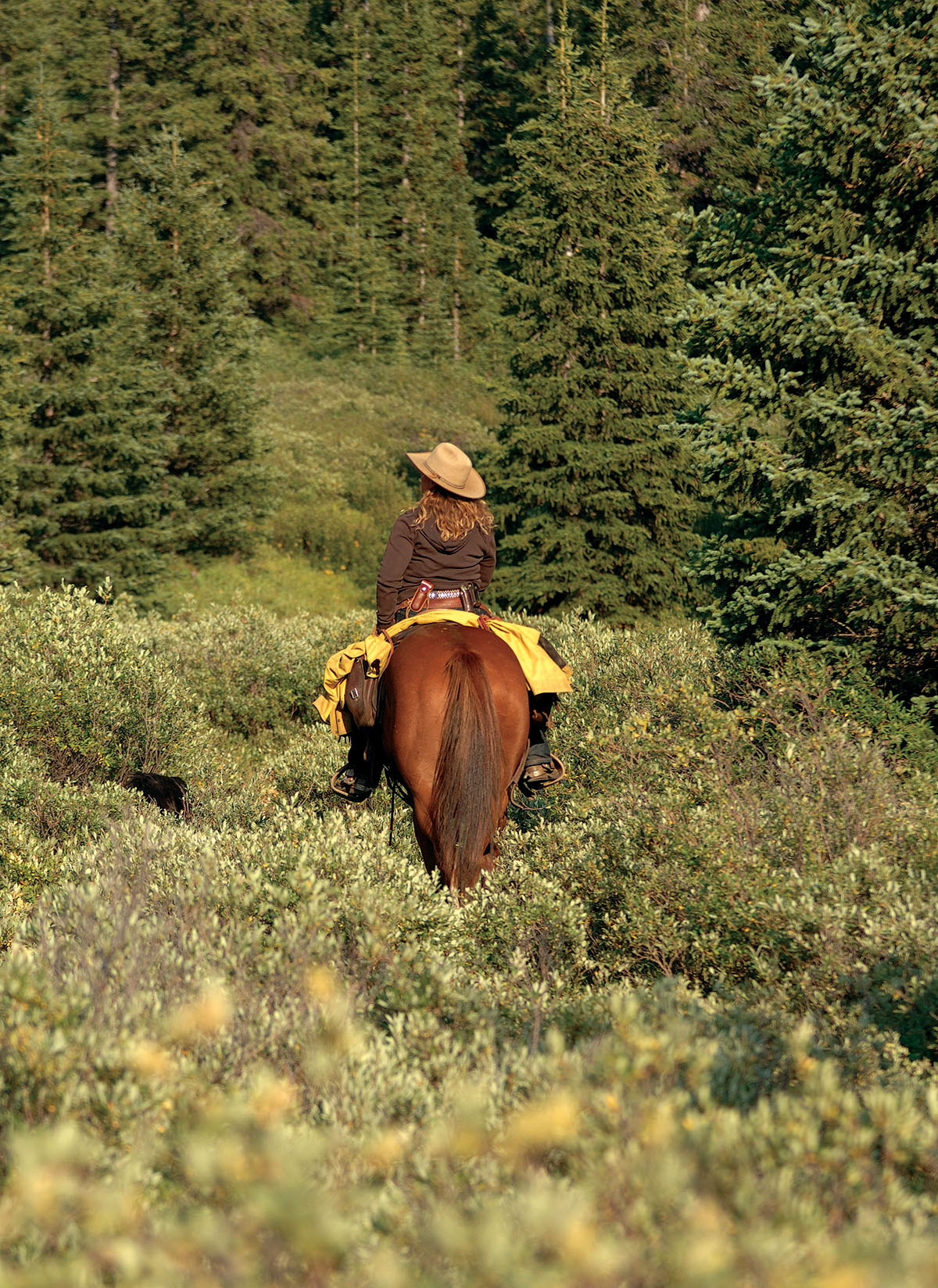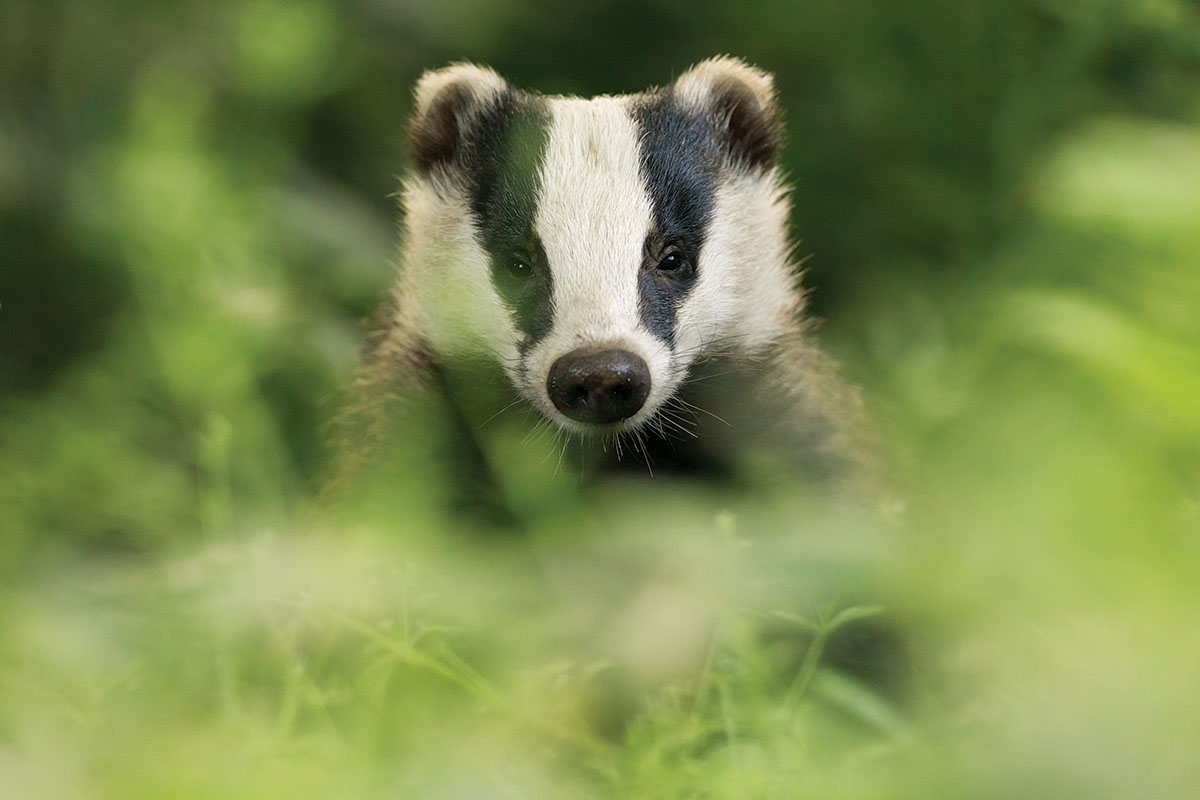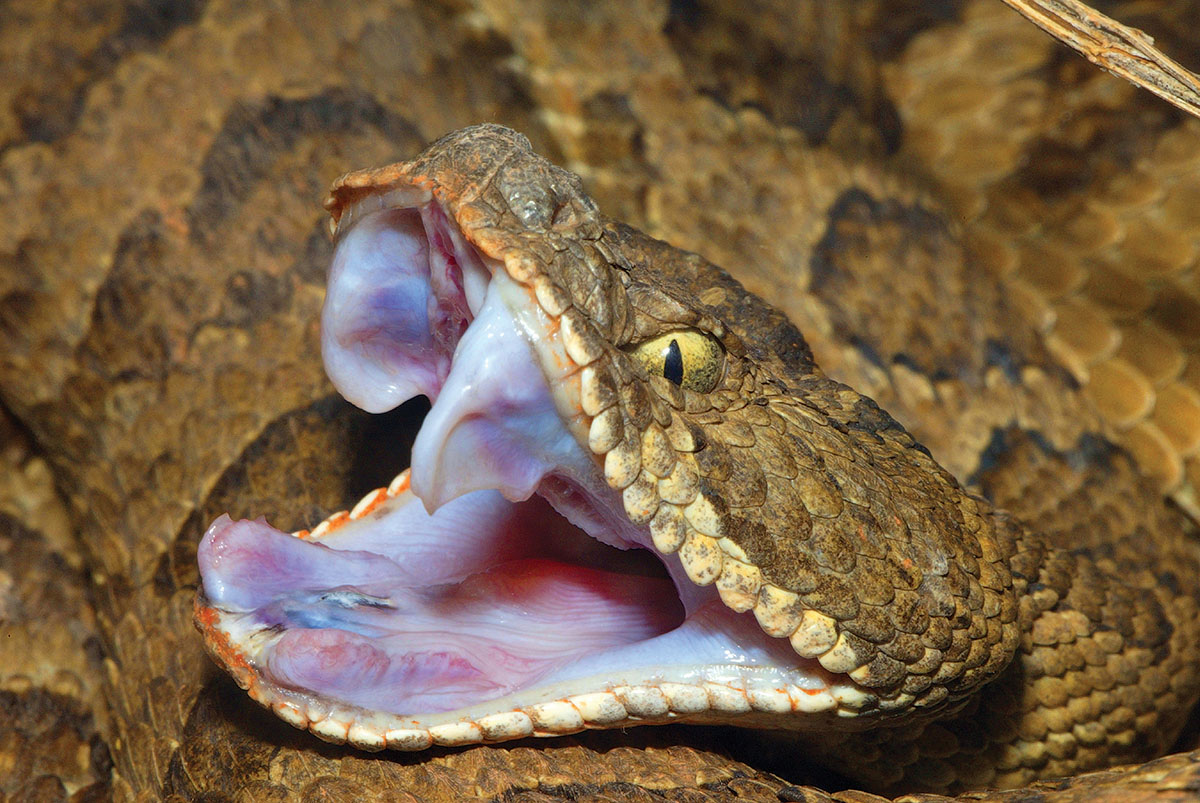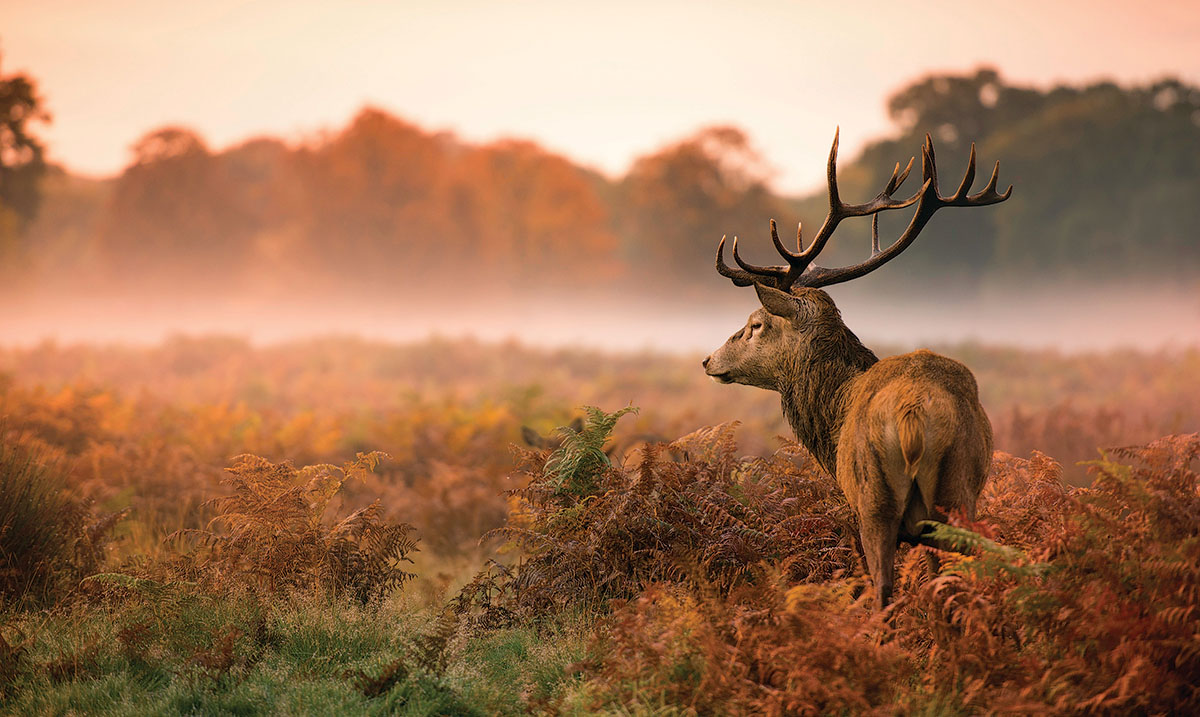
Wildlife on and near the trail can pose a danger to you and your horse. Although most wild animals are benign, their rapid, unexpected movements can cause a spook and even a wreck.
Depending on where you ride, you could come face-to-face with a large predator, such as a bear, mountain lion, or even a wolf. You might also need to watch out for rattlesnakes.
To decrease the risk of injury to you and your horse, here’s a handy guide on how to handle wild-animal encounters. We’ve divided the guide into five categories: ground-dwelling birds, small mammals, members of the deer family (deer, elk, and moose), rattlesnakes, and predators (bears, mountain lions, wolves, and coyotes).
You’ll learn the animals’ habits, the potential dangers they can pose to you and your horse on the trail, what to do if you encounter them, what not to do, and how to prepare for (or avoid) an encounter.

Ground-Dwelling Birds
Habits: Ground-dwelling birds (such as grouse, quail, partridge, and wild turkey) tend to crouch down and hide in tall grass or low shrubs. As you approach on horseback, they can panic and fly away. Most birds roost at night and are active during the day.
Trail dangers: Ground-dwelling birds are more of a nuisance than a danger, but they can startle your horse, creating a spook. A single bird is scary enough, but the explosive movement and noise of a covey may rattle even an experienced horse.
What to do: Stay calm, and keep your seat; your horse will likely settle down as soon as the birds fly away. If he spooks and tries to bolt, circle him until you can halt, then calm him with a soothing voice and rubs.
What not to do: If you spot a bird or covey, avoid tensing and holding the reins tightly; you’ll transmit your fear to your horse, making him even more likely to spook.
Preparation tips: Put more trail miles on your horse. The more experiences you have together, the more bonding and trust you’ll build with him. This trust will help your horse calm down and listen to you in scary situations. Improve your horsemanship so you have a solid seat. For help, consult a certified riding instructor or reputable clinician.

Small Mammals
Habits: Many small mammals are somewhat nocturnal, so you’re most apt to see them at dawn or dusk. Unlike large animals, a small animal can suddenly scurry right under your horse’s feet.
Trail dangers: Small mammals—such as squirrels, chipmunks, skunks, raccoons, badgers, and foxes—can frighten your horse if you come upon them unexpectedly or if they run out in front of your horse. Your horse may spook, spin, or bolt, which can lead to injury of both you and your horse. Small animals rarely pose a direct danger, but some carry rabies. Squirrels, chipmunks, and other rodents carry bubonic plague in some parts of the country.
What to do: If your horse spooks, relax. If you’re relaxed, your horse will be more apt to relax. He takes his cues from you just as he would any herdmate. Speak soothingly to him, rub his neck, and assure him there’s nothing to fear. If the animal doesn’t flee when it sees you, go around it, giving it a wide berth. On a narrow trail, follow slowly behind the animal, or stop until the animal returns to the brush. Keep your distance if you see an animal with signs of rabies (wandering in the open during the day, staggering, and moving erratically).
What not to do: Don’t chase or corner the animal. Don’t try to get a closer look. Even a small creature may attack if it feels threatened.
Preparation tips: At the barn, accustom your horse to an array of unusual and sudden sights, sounds, and movements. Work with him on the ground and under saddle.

Rattlesnakes
Habits: Most rattlesnakes flee when startled, but when they’re shedding or mating (springtime for the Western diamondback; late summer and early fall for the Eastern diamondback) they may strike out at anything that approaches. If they feel cornered, they coil and prepare to strike. They also may strike if startled when sleeping. Rattlesnakes are most aggressive when emerging from their dens in early spring, as well as during their mating season. Rattlesnakes are most active in warm weather. Being cold-blooded, their body metabolism slows in cool weather, preventing fast movement. On hot days, they’re more likely to seek shade in tall grasses. After sundown, they may lie on dirt and paved roadways, soaking in ground warmth.
Trail dangers: Rattlesnakes can startle your horse, leading to a spook. The snake’s rattling may also scare your horse. Rattlesnake bites inject venom into a victim’s bloodstream, which can be life-threatening to you. Most rattlesnake species don’t have enough venom to seriously affect your horse, unless he’s bitten on the face. (A bite on a horse’s nose can occur as he reaches down his head to investigate.) The resulting swelling can close off air passages, causing suffocation. A bite on your horse’s leg may create swelling and possible infection, but isn’t life-threatening.
What to do: Stop and wait for the rattlesnake to move away. You can ride around it, but be aware that there may be other snakes nearby, especially during mating season. If the trail is narrow and the snake doesn’t move away, dismount, and prod it with a long stick, or throw small rocks at it. Stay out of striking distance.
If your horse is bitten on the face, run cool water over the bite site, and apply DMSO (dimethyl sulfoxide), a nonsteroidal anti-inflammatory drug, to help prevent excessive swelling and tissue damage. If he’s having trouble breathing, insert a 4- to 6-inch length of garden hose into each nostril. Slowly proceed home or to your trailer, then call your doctor or veterinarian.
Call 911 for Life-Threatening Emergencies
What to do: If you are faced with a life-threatening human emergency, call 911 immediately for help.
What not to do: In case of a snake bite, do not attempt to pursue or kill the snake as it may become aggressive when cornered. Avoid rushing home if bitten, as increased blood circulation can pump more venom through the body. Do not slash the bite area with a knife to suck out the venom, as this may lead to further tissue trauma or excessive bleeding. Additionally, avoid icing the bite site, as it can cause further tissue damage.
Preparation tips: When in rattlesnake country, pack essentials such as water, lengths of garden hose, and DMSO gel. Consult your veterinarian for guidelines on using these items.
[Read: Tips For Your Guest Ranch Adventure]

Deer
Habits: Deer, elk, and moose are commonly found in open spaces. Mule deer inhabit foothill and mountain areas, while white-tailed deer frequent valleys, waterways, and brushy regions. Elk are more elusive but may lose their fear of humans in non-hunting areas. Moose are often found in willow stands, marshlands, and lakes.
Trail dangers: Deer are not aggressive, but a white-tailed doe may come toward you to protect her fawn. Elk may stand their ground or approach you, especially during mating season. Moose can be dangerous due to their impulsive behavior and lack of fear.
What to do: If you encounter an elk or moose, back off and retreat to safety. Give the animal space to pass if it follows you on a narrow trail.
What not to do: Do not panic if faced with an animal. Avoid turning and galloping off, as your horse may not outrun them.
Preparation tips: Stay alert to control your horse in case of startlement. Ride a calm, experienced horse with a green or spooky horse to settle nerves. Watch out for moose and avoid dense willow stands.
Predators
Habits: Large predators such as bears, mountain lions, and wolves are most active at night. Coyotes can hunt anytime.
Black bears usually avoid attacking horses, but grizzlies can be unpredictable. Bears are most aggressive in spring when emerging from hibernation or protecting cubs. Mountain lions have a defined territory and prefer rugged areas. Wolves may hunt in packs, especially when protecting their pups. Coyotes are more aggressive during mating season and in summer.
Trail dangers: The main danger is a panicky horse that may cause accidents in the presence of predators. Predators rarely attack horseback riders.
What to do: If you encounter a predator on the trail, halt your horse and remain calm. If necessary, dismount and continue to soothe your horse.
If possible, move to the side of the trail to allow the animal to pass. Use noise to encourage the predator to leave. Avoid riding between a mother and her offspring.
What not to do: Avoid eye contact with predators and refrain from leaving hastily, as it may trigger a chase response. Do not attempt to outrun large predators with your horse.
Preparation tips: Look for scavenger signs to anticipate predator presence. Make noise while riding to alert less aggressive predators. Carry bear spray and attach a bear bell to your cinch for safety in bear country.
statement:
The company will be implementing a new software system next month.
Next month, the company will be rolling out a new software system.

